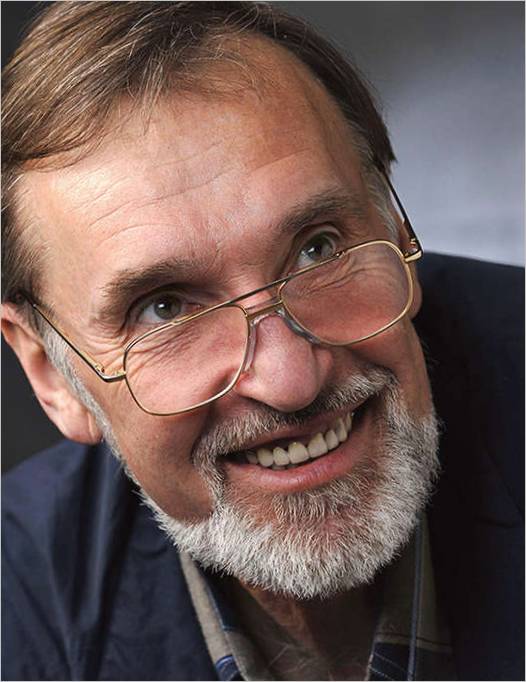
The column “Photocriticism” is run by Georgy Rozov, a famous photographer and teacher, author of popular books on the technique and art of photography. This competition includes photos sent by readers of “Photo&Technique” magazine, the results of which were published in №14 46 2013.
In the editorial mail, among the submissions I keep finding more and more works that are already interesting because their authors, who have mastered the basics of photographic skills, are in search of new subjects, new solutions to questions that are as old as the world itself. They learn not to look, but to see the world around them as it will later appear on the plane of the screen or the plane of the print. It’s easier now than it was in the days of film photography.
When we take a picture, we already see a prototype or a version of a finished future picture on the monitor. This clarity and ease of shooting is deceptive. Art has no well-trodden paths, no easy ones. The photographer’s work does not end once the shutter is released. Then came several important phases: selection, framing, retouching, title, analysis of the shooting. Only after that there are new “coins” in the invaluable piggy-bank of experience and hope to climb the next rung of the ladder leading to the unattainable top..
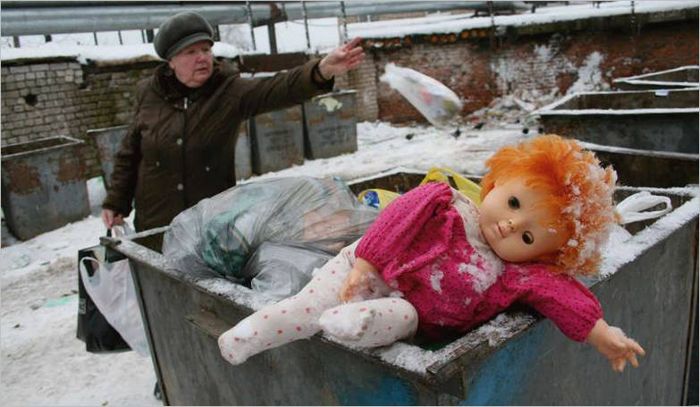
1. “Abandoned Childhood.”
Alexander Artemenkov pos. Tuchkovo .
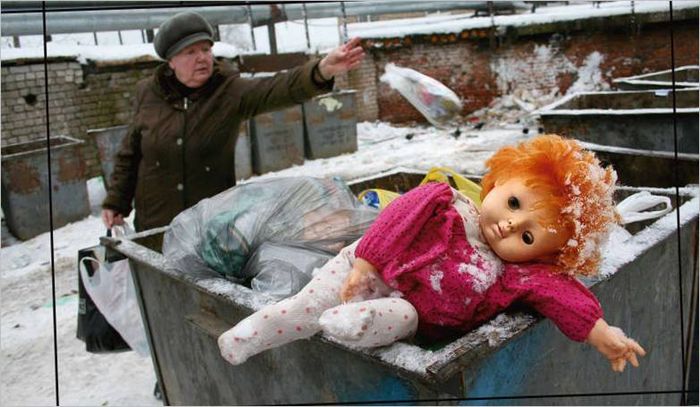
2. Photo 2.
I liked the shot by Alexander Artemenkov from Tuchkovo, New York region photo 1 . If I saw this doll in a dumpster, and in such a pictorial pose as well, I would certainly stop and wait for someone to humanize the dead subject and turn an unfeatured still life into a full genre shot. Or, as a last resort, I could persuade any suitable person to play a part in a little photo-performance. I would be guided by the desire to make the future photo as photographic as possible.
There could be several ways of achieving this goal. First thing that comes to mind: tear off the foreground from the background by using a fast lens with an aperture open at least to f/2.8. You could change the lens, narrow the angle of view of the optics to normal. High power poltinas have a shallower depth of field and therefore can beautifully draw an out-of-focus zone deep in the frame. That way the doll could be detached from the background and the background itself could be made more homogeneous.
In the author’s version, it’s filled with a lot of very active, clearly delineated spots. The two horizontal strips of light above are the garage roofs. Below – rectangles of walls and trash cans. Then a bright diagonal of snow on the road. On the roofs of garages, spots and verticals of pipes. All this “richness” is in the eyes, fighting for the viewer’s attention, distracting him from the main thing in the picture: the dolls and the pensioner.
If I had been the author of this photo I would have tried to make another version of the theme: I would have asked the heroine to throw not a garbage bag but a doll. Of course, it would be more difficult to shoot it. I would probably have had to turn on continuous shooting mode and do a dozen takes to get everything in the frame to fit together. Maybe I should have tried shooting with a wire, too, to blur the background nicely. This variant is especially good if you don’t have a “pedigree” high-speed optic handy.
I’d probably try lighting the foreground with a minus-correction flash in rear-curtain triggering mode. In this case the flying doll is guaranteed to be sharp, the background is blurred and a trace of grease is left behind the “abandoned child.
I fantasized only to exercise the ability to come up with as many variants of photographic solutions to the subject as possible. I do this all the time, and mentally shoot even without a camera. It’s easier not to get bored, to be in good shape all the time.
But if we talk about the work that Alexander Artemenkov did, I would suggest cropping the image slightly, raising the micro-contrast in the foreground to accentuate the doll and, conversely, lowering the micro-contrast in the background by at the same time brightening it. Approximately as in photo 2.
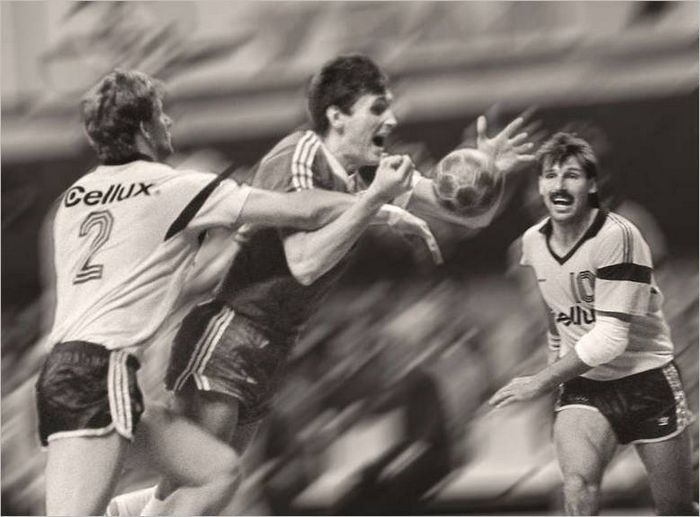
3. “The Decisive Moment” by Grigory Aleksanyan New York .
Camera: Precisa L.
Lens: Jupiter-21T
Shutter speed: 1/250 s.
Aperture: f/4.
Svema Photo-250 film.
Sports are hard to shoot. It’s hard to catch an interesting moment. It’s even harder to capture not only the dynamics of the movement, but also the emotional state of the characters. And it is the highest skill to collect all this in a harmoniously combined picture.
Grigory Aleksanyan from New York was probably not quite satisfied with the result obtained during the shoot, and decided to improve the photo in the retouching process. On the original, the figures of the athletes were too sharp, and the background was not blurred enough. The negative was digitized and exposed to the Motion Blur filter in Photoshop. Figures of sportsmen were smeared diagonally, but not only in the direction of the movement, but also in the opposite direction too. Especially funny looks like the right figure in the frame: it looks like the wings have sprouted.
In short, any photographer who has shot with wiring themselves will immediately notice that the grease marks are out of place. They would only be behind the objects being photographed. It’s quite possible that people unfamiliar with the intricacies of how motion is represented in the picture plane might not notice any “wings” or other incongruities. They will probably like the picture very much, because the figures, the inscriptions on the shirts, the stripes on the shorts are sharp. Background is blurred. The sense of movement, the heat of the struggle is quite conveyed. And I would be happy to join such an audience and enjoy the author’s good fortune. But, alas! In much wisdom, much sorrow!
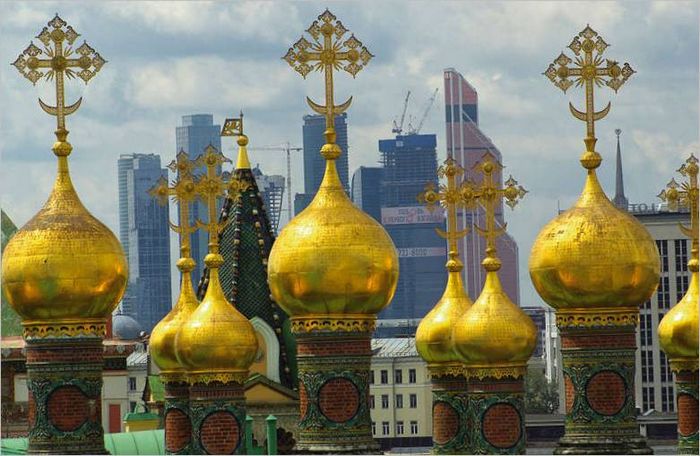
4. “New York Landscape” by Oles Kolodyazhny St. Petersburg .
Camera: Pentax K10D
Lens: Takumar 70-200 f/4-5.6
I will start with the title, because lately I often come across the incorrect use of the word “landscape”. Usually when people talk about landscape, they mean the type or kind of natural terrain. Of course, it is somewhat of a stretch to call New York a natural complex, for we are all part of nature, and all the freaks created by people will sooner or later be overgrown by grass or woods and become a cultural layer and an object for future archeologists to study.
As the unforgettable Ostap Bender used to say, “Do not speak beautifully!”. What is depicted in Oles Kolodyazhny’s photo could have been simply called New York. In my youth such subjects were very popular and were always called the same thing: “The Old and the New”. Not too ingenious, but essentially true. The conflict of architectural styles is obvious. The subject is covered. And with the help of technical refinement. It has inspired poets, artists and photographers countless times. And it will continue to inspire more than a million times over, remaining interesting to the best of the interpreter’s talent. The photographer used a televisor.
I dare to suggest that I shot this shot handheld and there was no shake thanks to the stabilized matrix. But the author was bad at focusing on the buildings inside the City, and you can even read the letters on the billboard..
And here are the church cupolas in the foreground “floating”. However, even if they were perfectly sharp, peace and harmony would not prevail in this work. The rounded shapes of the foreground and the angular figures in the depths cannot be combined in this image. Perhaps everything would have come together if the depth of field of the lens had been smaller. The background could be blurred, dissolved to ambiguity. That would make an interesting picture.
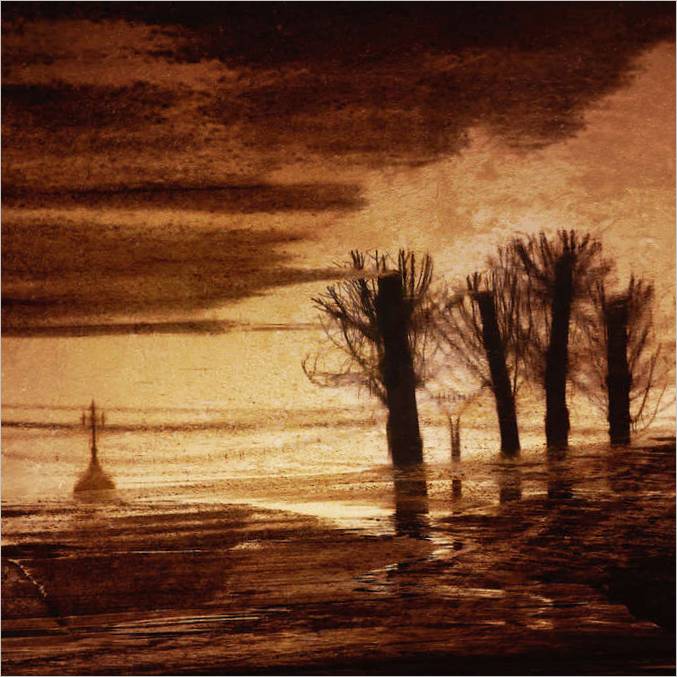
5. “Imaginarium” by Olya Simakhina. Cheboksary .
Camera: Nikon D5100
Lens: AF-S Nikkor 18-105mm f/3.5-5.6
Olga Simakhina from Cheboksary. There are a lot of them now, it’s the fashion. But more often they are so blunt that no magic happens. The picture is still as naturalistic as it was before I turned it upside down. Think about it: upside down, it means the opposite, and the new picture must look different from the original one.
Olga has managed to do just that, and with great taste as well. The image has been grained to look like a film. That is the image was deliberately roughened up to give it pictorial quality. Sharpness was applied to reflections of a cross and trees in a puddle. Objects important for triggering the viewer’s imagination are realistic, recognizable and tonally contrasting with the light background of the sky.
“Earth and sky” are rendered blurry and tonally flattened. The sidewalk in the upper part of the image looks like dark clouds of thunder.
“Imaginarium” turned out to be well thought out in every detail. Congratulations to the author for her creative success!
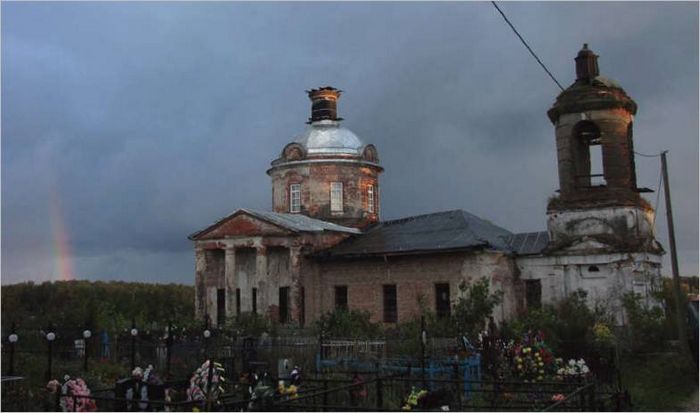
6. “My temple.”. Evgeny Merkushin New York .
Camera: Canon PowerShot SX 1 IS
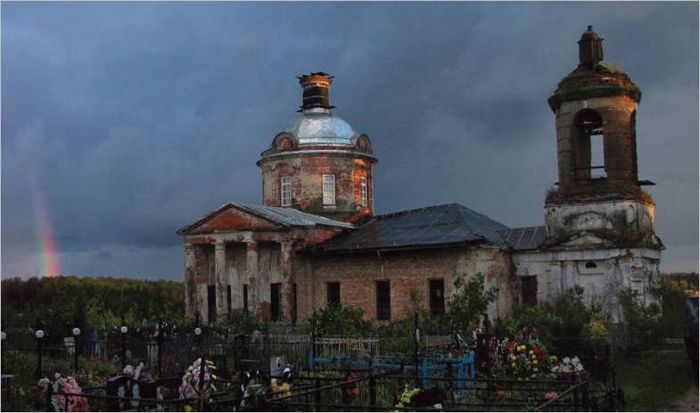
7. Photo 7
.
Here is a picture of the Church of Boris and Gleb in the Alexandrovsky District of the Vladimir Region. From the accompanying note, it appears that the author was very concerned about getting the colors right and therefore turned on manual white balance. He’s sad that he couldn’t get rid of the wires completely, and he would have liked to move the rainbow closer.
I essentially agree. Wires should be removed. I got rid of the pole as well, it did not embellish the picture and looked like a foreign object next to picturesque ruins. I really liked this gloomy work by Evgeny Merkushin, so I wanted to make it more perfect. I tried to do what I thought was necessary with this shot. For example, I slightly corrected perspective distortions to straighten out the verticals, emphasized orange spots of sunbeams on the top of the building, and lightened rainbows and graves in the pogost. That is, I highlighted photographically important spots in the picture plane Picture 7 .
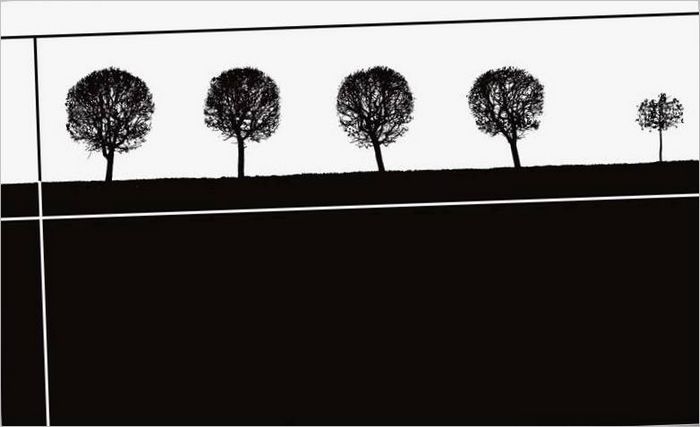
8. “Underdog.”. Vladimir Paltchik St. Petersburg . Peterhof. Marlin’s rampart
Camera: Nikon D5000
Lens: Sigma 18-200mm F3.5-6.3 DC OC HSM
Vladimir Palchik’s photograph is built on the oppositions: four correct and one out of the ordinary. And also on the conflict of black and white, and also on the breakdown of rhythm. The author’s version seems to present the earth in a cross-section at all. Something like an attempt of a collision between hell and… another hell. I am loath to call the upper part of the landscape “heavenly”. Peace structure reduced to the laconic set of two backgrounds and five pruned trees tortured by pruning gardener doesn’t look like heaven.
But this modest toolkit is enough to create a photographic parable about the clean and the unclean, or a variant of the ugly duckling tale. The story is not new again, but it is always actual. It has countless times served as inspiration for poets, painters and photographers. And it will serve more than a million times, remaining interesting to the extent of the interpreter’s talent.
In this case the author’s version reminds me of a caption picture for an illustrated magazine: the upper part contains the gist of the statement, and the black field is the background for some textual announcement. I made such pictures for “Ogonyok”, but it is hard for me to imagine such work on the wall of the exhibition hall. And so, modestly coughing into my fist, I propose my own way of framing.
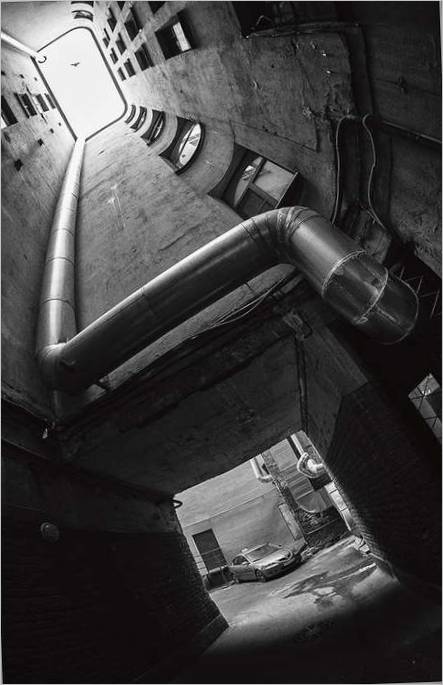
9. “Give Me a Gulp of Heaven!” Vladimir Palchik St. Petersburg
Camera: Nikon D5000
Lens: Tokina 10-17mm F3.5-4.5 Fisheye
Another photograph by Vladimir Palchik. It is masterfully made. Excellent use of the wide angle, diagonal vertical drop, and bottom angle. And even splitting a picture into three parts doesn’t ruin it. A sure sign of perfect composition – neither more nor less!
Besides, some old grouch might still maliciously say that only the lazy have not taken pictures of St. Petersburg courtyards and wells.
It’s hard to say: the subject is not new, but everything is not new under the moon. Moreover, on the way to their own, individual view of the world, to their own style, all photographers go through a stage of apprenticeship and imitation of the best models. I have a feeling that Vladimir Palchik has only one step left on the road to creative freedom and finding his individual style.

Based on Rozov’s comment, it seems that he is looking for honest feedback and constructive criticism on the quality of the photo. He emphasizes the importance of capturing better shots rather than receiving compliments. The question that arises is, what specific aspects of the photo could be improved to meet Rozov’s standards?
What criteria does Rozov use to evaluate photos? Can you provide specific examples of how photographers can improve their shots?